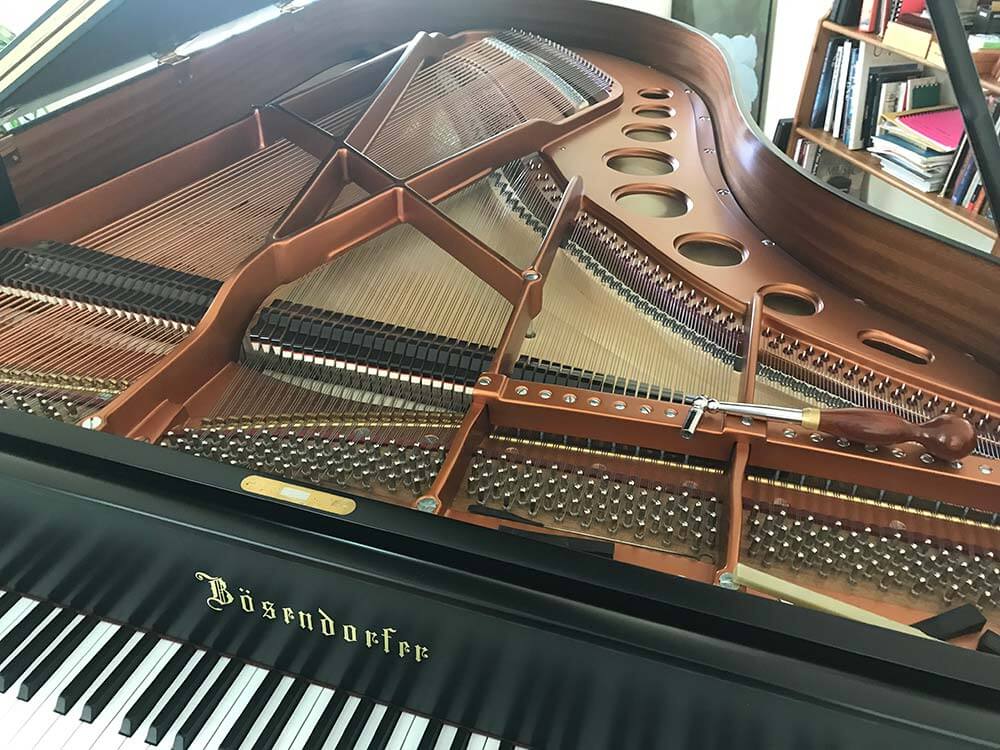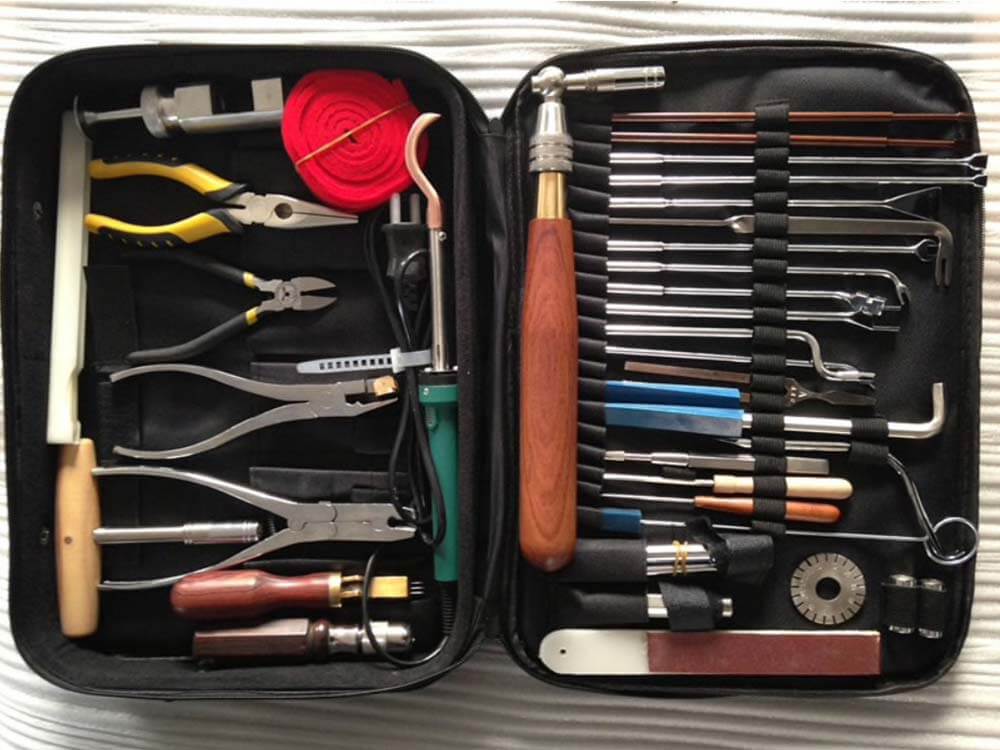
Tuning
Your piano has approximately 220 strings for the 88 notes on the keyboard. The lowest bass strings are single strings, graduating to two strings, and then three for most of the upper range of the piano. Tuning the piano consists of setting the correct relationship of the notes to each other, within each octave and repeating across the 7+ octaves of the keyboard and, most critically, putting the two or three wires for each note (the unison) into perfect tune with each other. ALL piano makers advise tuning a piano twice a year, to keep it sounding its best and to preserve its long term value over time.
The wooden soundboard, bridges and metal frame of the piano change constantly with changes in the temperature and, especially, humidity; pushing and pulling of the strings and throwing then out of tune over time. A piano will go out of tune whether or not it is played. In fact, playing (or not playing) the piano has almost no influence on the tuning. Regular tuning is critical to the musical sound of the piano and to the long-term maintenance and value of the instrument.
If a piano has not tuned for a long time, or not tuned regularly in the years after purchase, the high tension on the wires will cause them to go flat. A pitch raise involves going through the tuning of the piano twice, to bring the strings to the correct tension and then stabilizing the tuning so that the piano can then hold its tune and be put on regular maintenance.

Repair
A piano is a highly complex creation of wood, metal, leather, felt and cloth, with hundreds of strings and a playing mechanism (the "action") with thousands of parts. They can function without incident for may years, but when a string breaks or one of the 88 assemblies that make each note produce a sound breaks down or won't function correctly, specialized tools and expertise are required to diagnose and properly repair the problem.
The piano owner's most common complaint is a "sticking key," something that is causing a problem with the mechanism that connects the key to the hammer that strikes the string and produces sound. Quite often the problem is a very simple one - a pencil or other object that has dropped into the piano and is causing a jam, for example - that can often be resolved with no repair and little or no extra charge. But the delicate wooden parts that make up the action can and do break and can need various degrees of repair.
Unfortunately it isn't possible to diagnose the issue without seeing and examining the piano, so a meaningful estimate for a possible repair can only be made at the piano.
© 2019 - 2024 Whatcom Piano Service